Lords of Exile is a retro action platformer made in the style of the gothic monster mashers that were in vogue in the 8-bit videogame era. I play as Gabriel, the most feared lieutenant of the warlord Galagar who wages a murderous rampage across the nation of Exilia. Gabriel’s infamy becomes so great that even Galagar sees it as a threat, so he has Gabriel’s fiancé killed as a warning not to challenge him. The warning backfires, as it turns Gabriel against his master. His quest for vengeance takes him across eight levels filled with dark fantasy and horror, battling vampires, spider-women, cyborg samurai, and other creepy ghouls, culminating in a confrontation against Galagar atop the highest tower of the warlord’s castle.
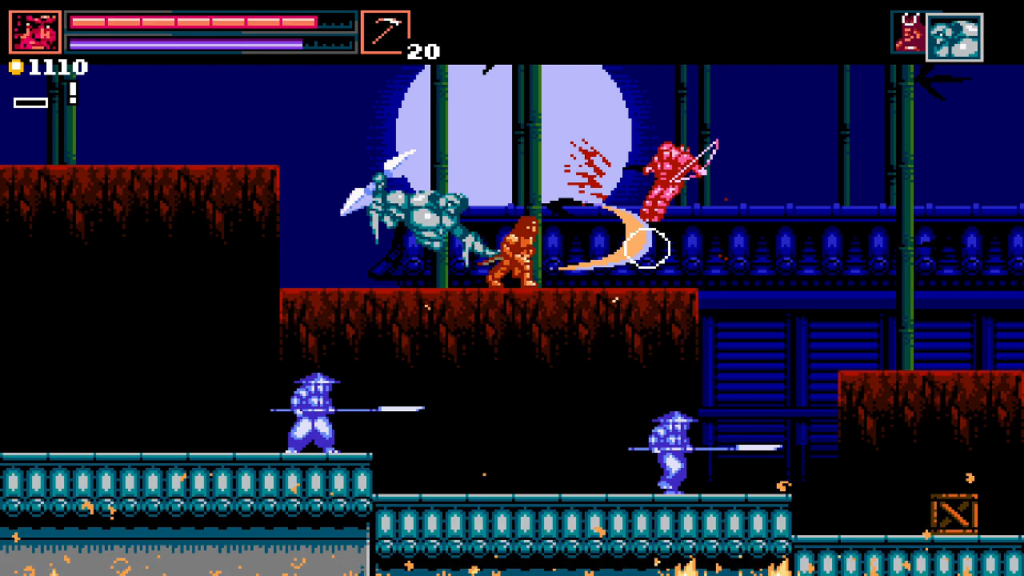
Story is a secondary concern in retro action videogames. It’s used as a tool to set the player character loose in an environment where their only goal is to kill everyone and destroy everything. Lords of Exile is unusual in its style in that its story elements feel especially meaningless even by these standards.
Not only does Lords of Exile employ the tired and hateful trope of killing a love interest to give their surviving partner his motivation, the murder doesn’t even feel needed. The prologue cutscene describes Gabriel’s early life. As an infant he survives an unknown calamity. As a youth his adoptive home on Exilia’s west edge is destroyed by marauders. These events harden him into an ideal action platforming protagonist who believes in survival through strength and violence as the solution to every problem.
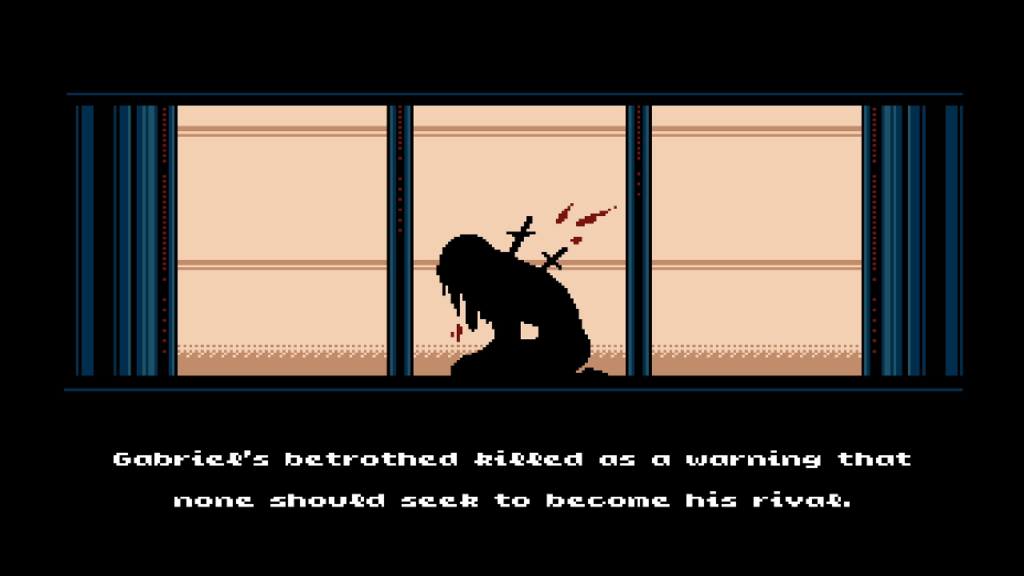
Either of these childhood traumas could serve as impetus for Gabriel’s revenge drama by making Galagar responsible for them—and at first I assume he is until I perform a closer reading of the prologue’s text. Instead, a woman who is not even allowed the dignity of a face and a name is slaughtered so the player character can have a reason to run from a stage’s left side to its right and kill a boss. Lords of Exile does itself no favors beginning with such a cynical storytelling decision. All I can see in it afterwards are its basic mechanics at their most naked and degenerate.
All these tragedies are made even more pointless because Gabriel is a player character devoid of characterization. The prologue and the epilogue tell me what he does and eight levels let me guide him through his rampage, but in all these moments I spend with Gabriel, he never speaks a word. How he feels about surviving two massacres in his childhood, the murder of his betrothed, or his vendetta against the warlord he once served is left up to my imagination. What little I am told about him is contradictory. The prologue claims that Gabriel, after the destruction of his hometown, “vowed that he would never bow his head to anybody,” and then the very same sentence concludes that he “[became] Galagar’s most deadly henchman.”
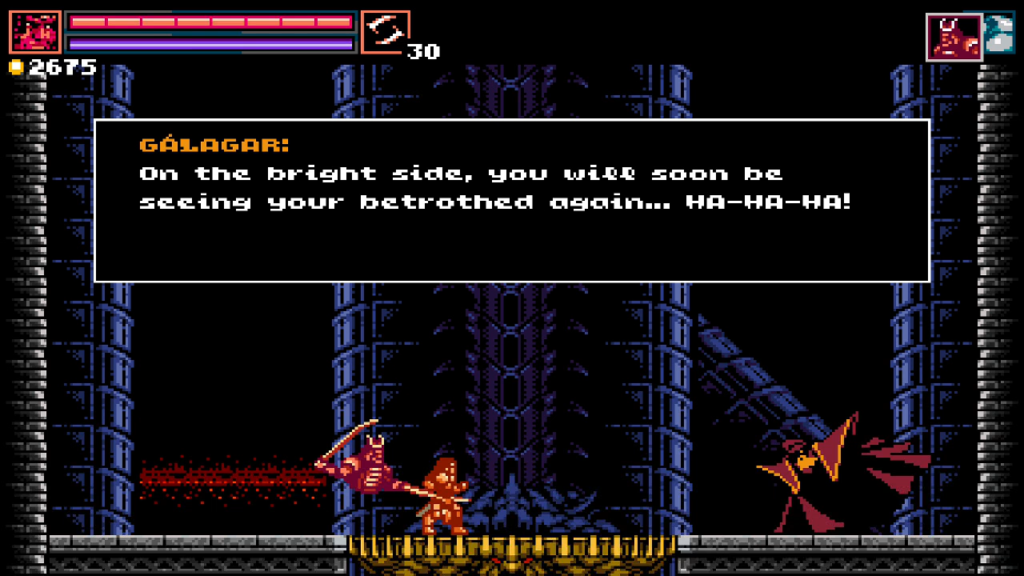
Retro videogames often have thin or ridiculous plots which affectionately recall the videogames whose aesthetics they seek to recreate. In the best of these, the lazy plot that exists only to excuse the conflict feels charmingly artless and stupid. In Lords of Exile, there is no charm to the premise, leaving it feeling just artless and stupid.
Where Lords of Exile disappoints in the rock-bottom standards for plot and characterization it impresses with visual style. Befitting its gothic stylings, Exilia is a world soaked in rain and darkness. Reaching Galagar takes Gabriel across environments as varied and incongruous as castles in both European and Japanese styles, wrecked ships covered in barnacles, a shattered aqueduct protected by a giant wyrm who swallows Gabriel whole, and an automated train carrying supplies between Galagar’s fortresses. All these environments are colored in dark blues, purples, reds, and blacks, conferring an overwhelming dreariness to the world. The brightest color I see is the noxious green of a few venomous monsters.
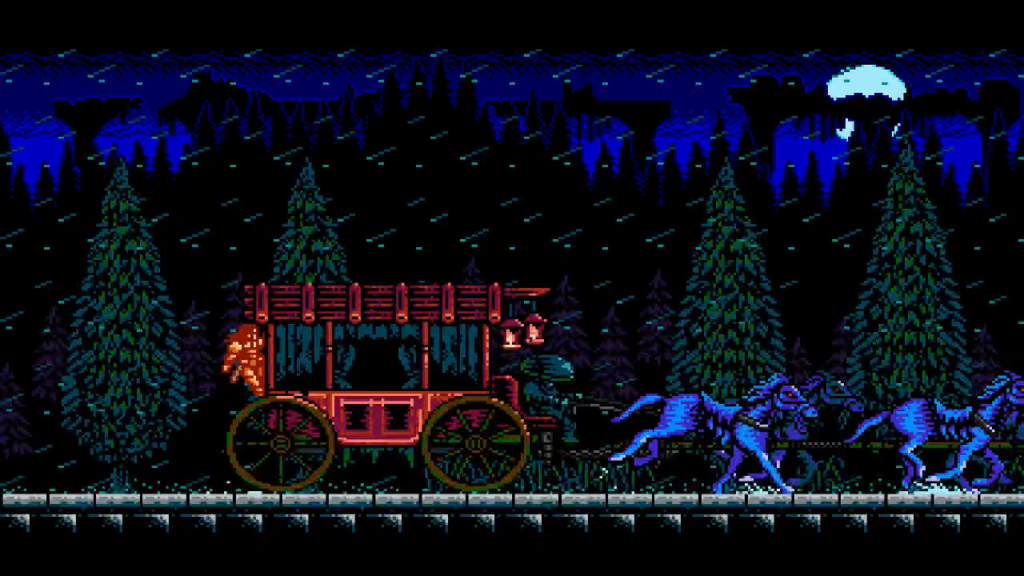
Gabriel rides into the first level clinging to the back of a carriage which careens through a rainswept forest road, drawn by a team of midnight blue stallions with glowing red eyes. When I look closer at the stallions, I see that their midsections have rotted away, exposing raw muscle and skeletal rib cages. How Gabriel came to be hitching a ride on this cursed carriage, where it is going, or the nature of the undead steeds driving it all goes unexplained. This image succeeds at two things: Giving me my first glimpse at Exilia’s dark fantasy environment which will be expanded upon throughout the following eight levels, and being cool for the sake of cool in a way the prologue tries and fails.
Gabriel leaps from the carriage at the doorstep to the first level, Samantha’s Castle, and I gain control of his avatar for the first time. To enter the castle proper, I must guide him through a stormswept courtyard strewn with boxes, torches, and rubble. Getting past these basic obstacles grounds me in Lords of Exile’s unique spin on platforming controls.
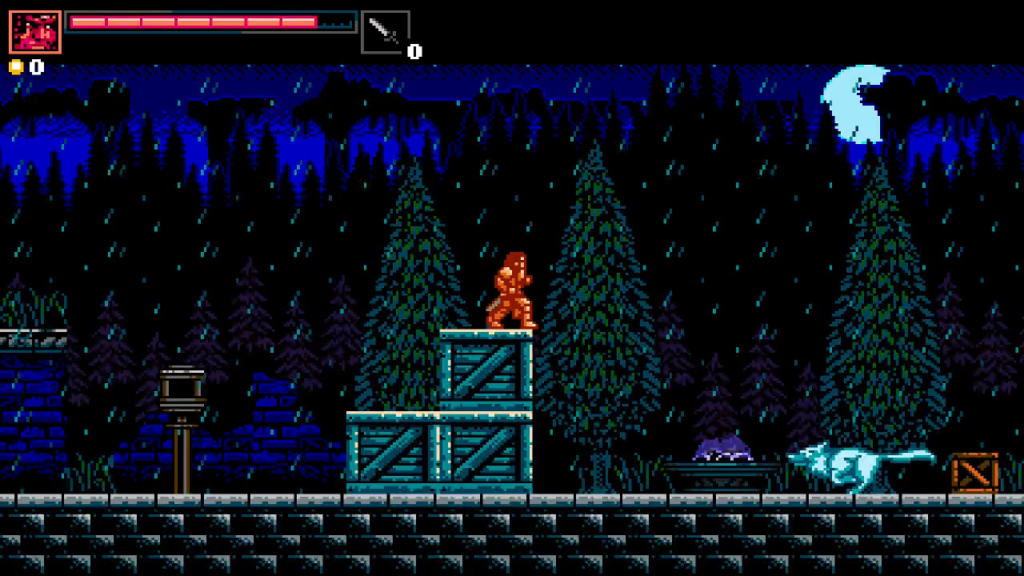
To get past the boxes blocking the courtyard path, Gabriel must jump over them. His jump doesn’t carry him far, but it does get his feet high and I can still change his trajectory in midair. Once in the castle, chandeliers begin crashing down from the ceiling. An on-screen button prompt teaches me how to make Gabriel perform a sliding forward kick, a maneuver he can perform in an instant even from a standstill. There are many obstacles in the levels ahead that can only be overcome with the split-second of speed this ability affords.
When not jumping or sliding, Gabriel never moves at a pace faster than a determined trudge. This would give him the aura of an inexorable revenant driven ever forward by the power of vengeance if not for the many monsters who get in his way. Almost all of them move faster than Gabriel. He won’t win many fights on maneuverability, so I must learn to time his sword swings to strike enemies as they charge into range. Most monsters die in one or two hits. When I’m timing Gabriel’s sword swings well, he feels as deadly and unstoppable as his feared reputation suggests.
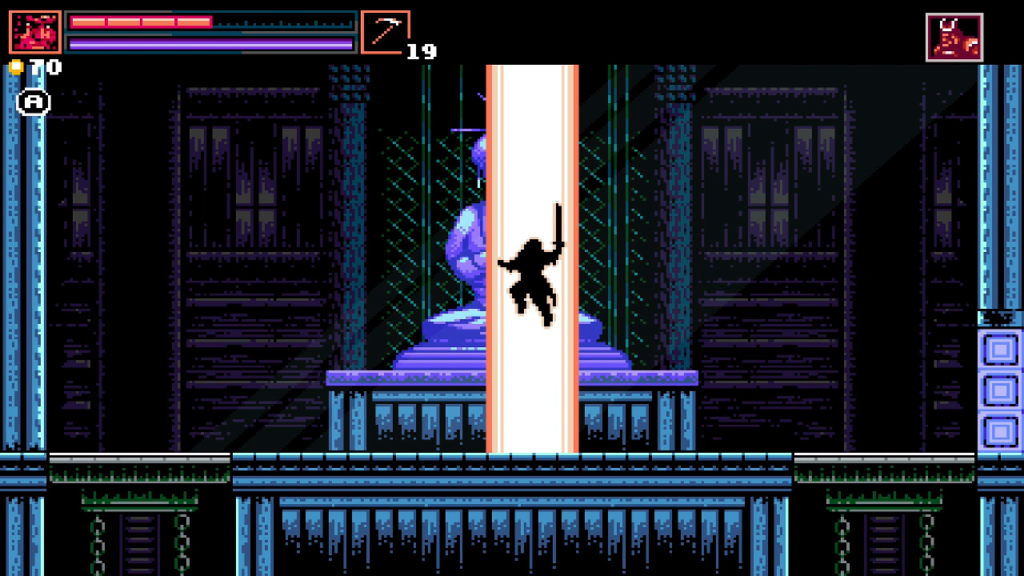
When Gabriel defeats a level boss or completes an especially grueling challenge, he earns a new ability. The most prominent of these let him summon one of two Shadows. Ghostly figures that hover over Gabriel while he fights and platforms, Shadows unleash extra attacks when I charge Gabriel’s basic attack for a few seconds. In addition to providing some limited ranged firepower, the different Shadows can break down blue barriers that block the path forward or pull Gabriel across large gaps using special targets.
The abilities these Shadows add to the level design should feel significant, but they do not. Their impact is to occasionally require Gabriel to stop and charge up an attack to bypass an arbitrary obstacle. Far from interesting additions, they feel like speedbumps. The blue blocks are a particular annoyance. They come in a variety of sizes and appear in uneven patterns, sometimes requiring a little extra unnecessary effort to completely clear away so Gabriel may continue.
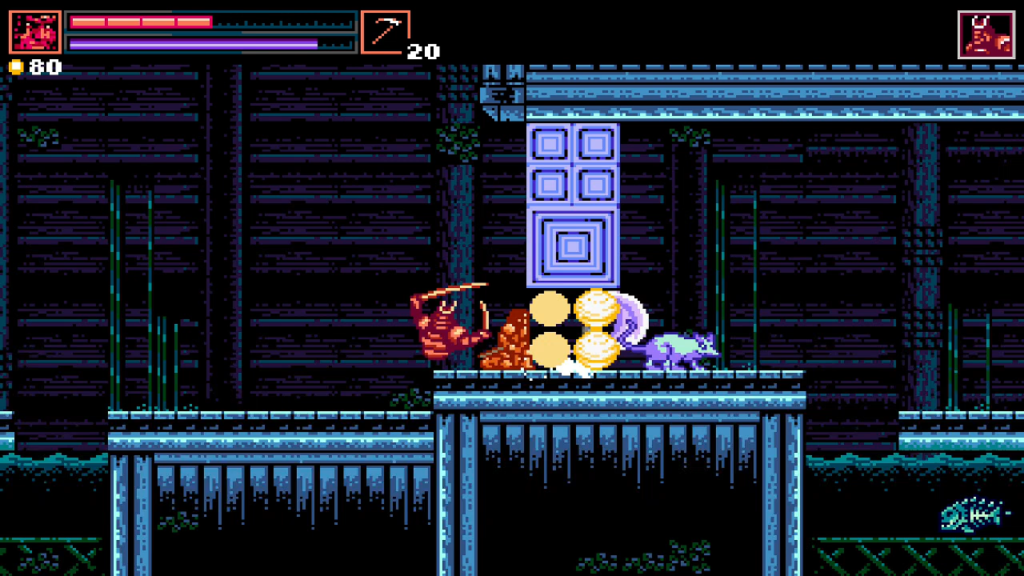
Gabriel earns many other abilities besides summoning his Shadows, but they are minor improvements to his default skills whose impact I barely notice. Only one feels transformative and it is the omnipresent double jump. It is needed in many locations after it is unlocked, but I also struggle to use it at several do-or-die moments. The second jump can only be activated after Gabriel has already reached the apex of his default jump. This feels unintuitive. Trying to double jump even a split-second too soon results in nothing happening at all. In rooms with wide pits or water flooding the tower beneath Gabriel’s feet, these small mistakes add up.
Dying is never too harsh a punishment. There is one difficulty option and it confers as many lives as Gabriel needs to finish his quest. If he does die by running out of hit points or touching an environmental hazard, then he returns to the last screen transition with a fully restored hit point meter. No matter how difficult Lords of Exile becomes, I never lose more than a few minutes of progress upon Gabriel’s death.
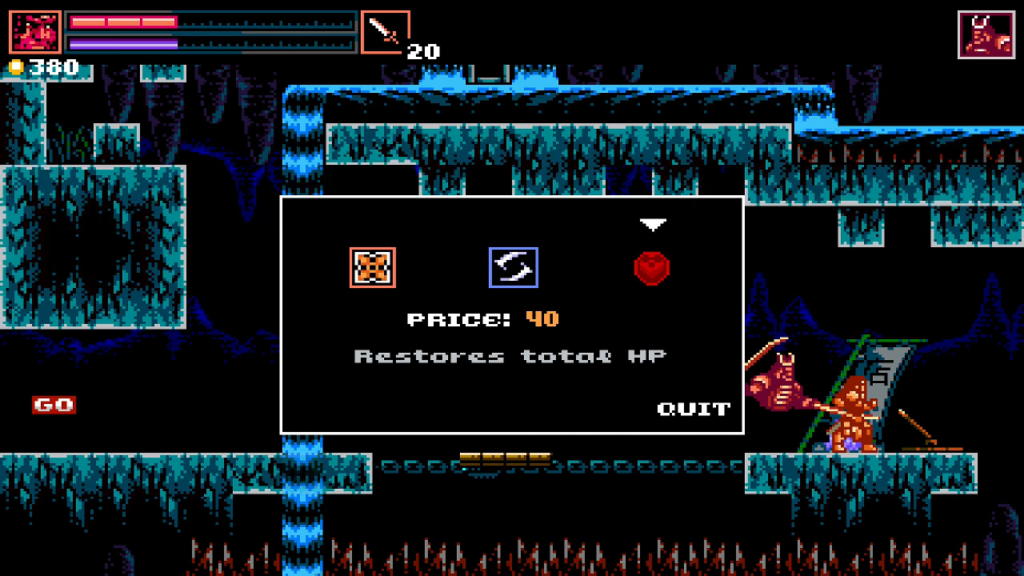
These factors are why I am confused by an included currency system. Most monsters drop gold when they are defeated. Gold can be spent at shops run by a friendly spirit or inserted into slot machines hidden in each level to receive healing items. Stores and slots are usually found just after a screen transition, making them feel useless when dying and continuing gives the same health-replenishing result.
The only purpose of gold seems to be for the score awarded to Gabriel at each level’s conclusion. Finishing a level in a single life awards more score, so purchasing healing items is the best way to sustain the player character and their score. Yet these point totals serve no visible purpose. The score is invisible outside the screen where it is awarded. I can locate no high score screen where totals are recorded. This could be interpreted as another throwback, as many 8-bit videogames included score systems with no functional purpose. Good retro videogames know what to keep and what to discard from their interpretations of old videogame design. This is a feature that should have been left in the discard pile.
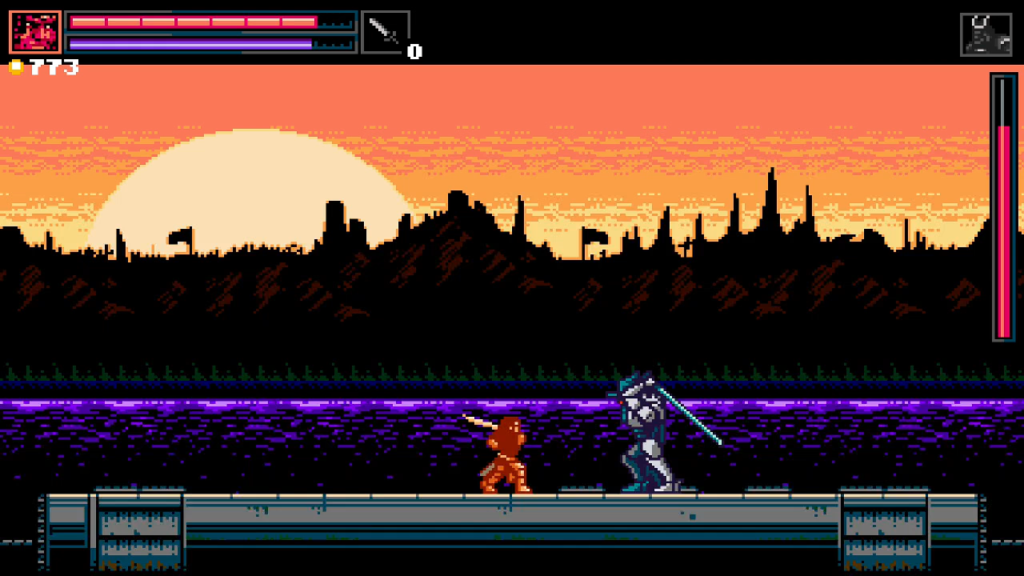
Before I receive a score for finishing a level, I must defeat its boss. There’s a great variety present who equal the diversity of stages. Samantha’s Castle is protected by Samantha herself, an elegant vampire lady wielding a fan who casts beams of red energy from the sky and summons a giant disembodied head that breathes fire across the battlefield. She is a good early test of my acclimation to Gabriel’s slow but precise movement. Later, Gabriel fights a giant spider with a woman’s tearful face painted on its cephalothorax. The spider climbs ever upwards all through the fight, so Gabriel must pursue by clinging to the webbed wall while dodging falling boulders and patches of venom. At the end of a castle filled with red-leafed trees and bamboo, Gabriel battles a giant boar whose small weak point and screen-filling attacks tests both my precision and my restraint.
Lords of Exile features a great batch of bosses. They have a flawless balance of challenge and fairness, testing my reflexes and pattern recognition in equal measure without pushing either too far into consternation or frustration. They are a highlight.
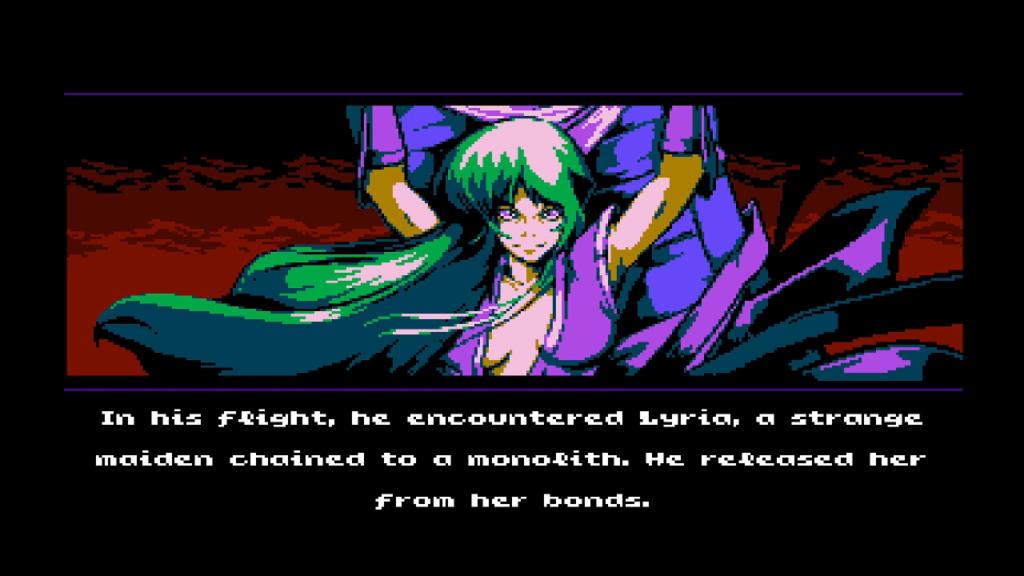
After defeating Galagar with Gabriel, Lords of Exile gives me a few more reasons to keep playing. I unlock a Boss Rush mode and a fully featured Speedrun Mode. The third and most significant unlock is a second player character.
This new player character, Lyria, appears from almost nowhere. She’s actually included in Lords of Exile’s key art—she’s the woman tied provocatively to a serpent’s chest on the right side of the image. She has no actual presence or impact in the videogame itself, only appearing when Gabriel frees her from her bonds just before the credits. Once I return to the main menu, I can begin a new game with Lyria as the protagonist.
Playing as Lyria doesn’t answer many more questions. She’s a traditional ninja-style action platforming character, able to move faster and jump farther than Gabriel, so much so that she doesn’t even need his Shadows to bypass level obstacles. More impactfully, she throws kunai instead of swinging a sword, letting her attack from across the screen.
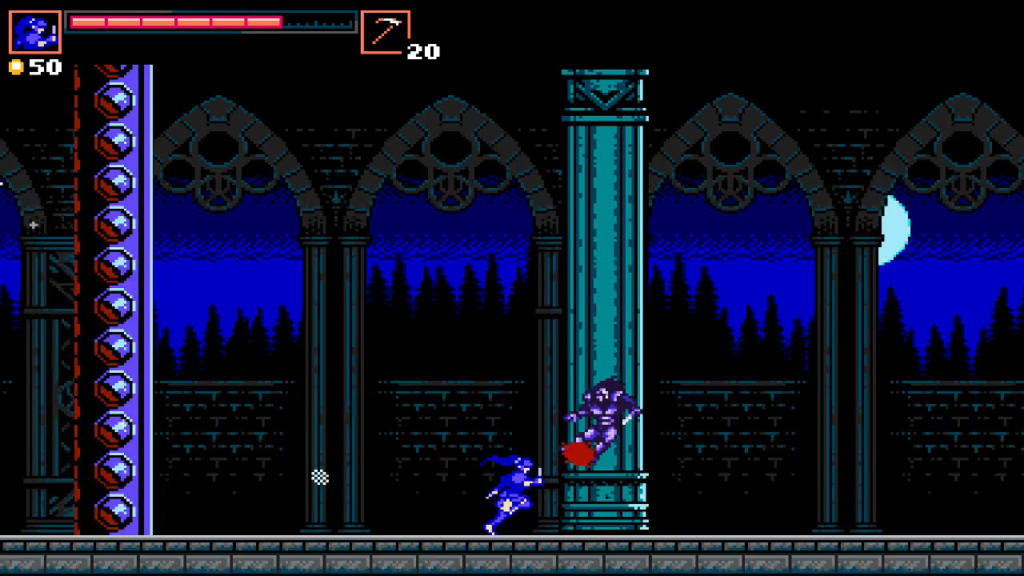
Lyria’s journey is otherwise identical to Gabriel’s. She replaces him in the same scenario, ending with a showdown against Galagar. She does have a different motivation, but not by much. Since levels and enemies are designed around Gabriel’s slow movement and melee attacks, she trivializes every encounter. She outruns every trap. She leaps across every pit. She dispatches even the most powerful enemy from across the room with her thrown kunai. With her increased movement capabilities, I finish all eight levels in less than half the time it takes me to conquer them with Gabriel. The result is an ending barely different from Gabriel’s own.
Lyria feels like an incomplete addition to Lords of Exile, but not a wholly unwelcome one. There’s something to be said for even a small amount of added variety.
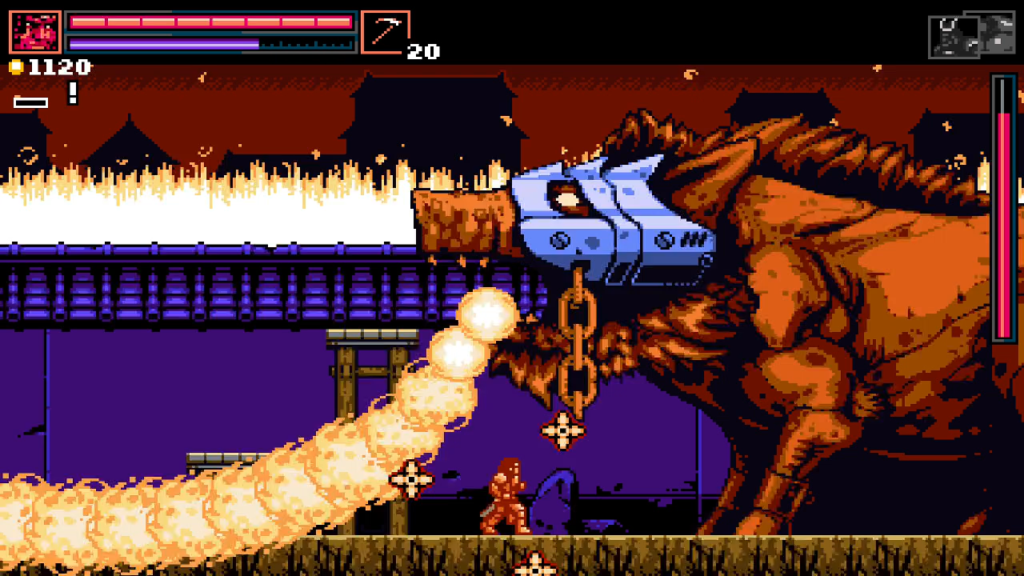
Overall, Lords of Exile is a good retro action platformer. Only a few of its aesthetic elements draw my critical eye. I am most troubled by its profoundly idiotic plot. This plot exists only in the prologue, which can be easily skipped and ignored, and I recommend players do so. I am also confused by the addition of currency and point systems which serve no useful purpose. Once I am past these elements, Lords of Exile has strong points in its favor. It’s a good retro action platformer, but not a particularly memorable or challenging one. Genre enthusiasts will have a pleasant time, and the 8-bit retro graphics are fantastic, but Lords of Exile won’t entice anyone who isn’t already a fan.